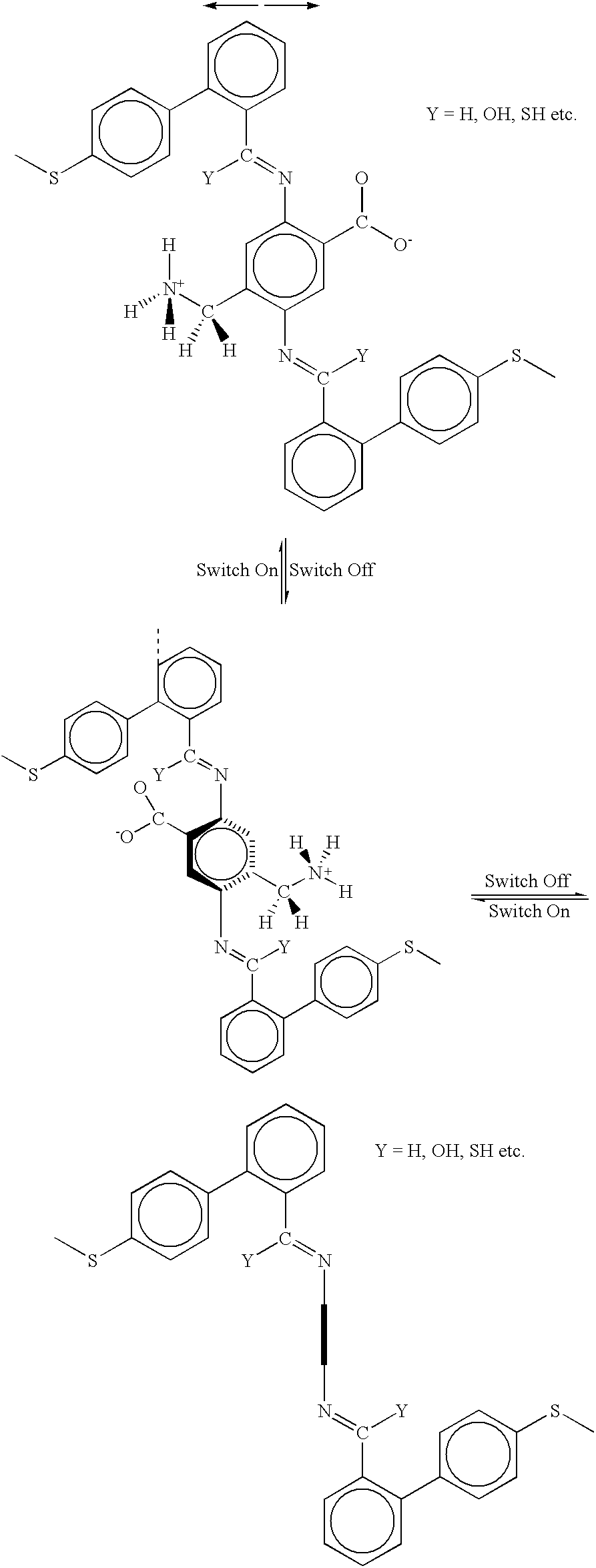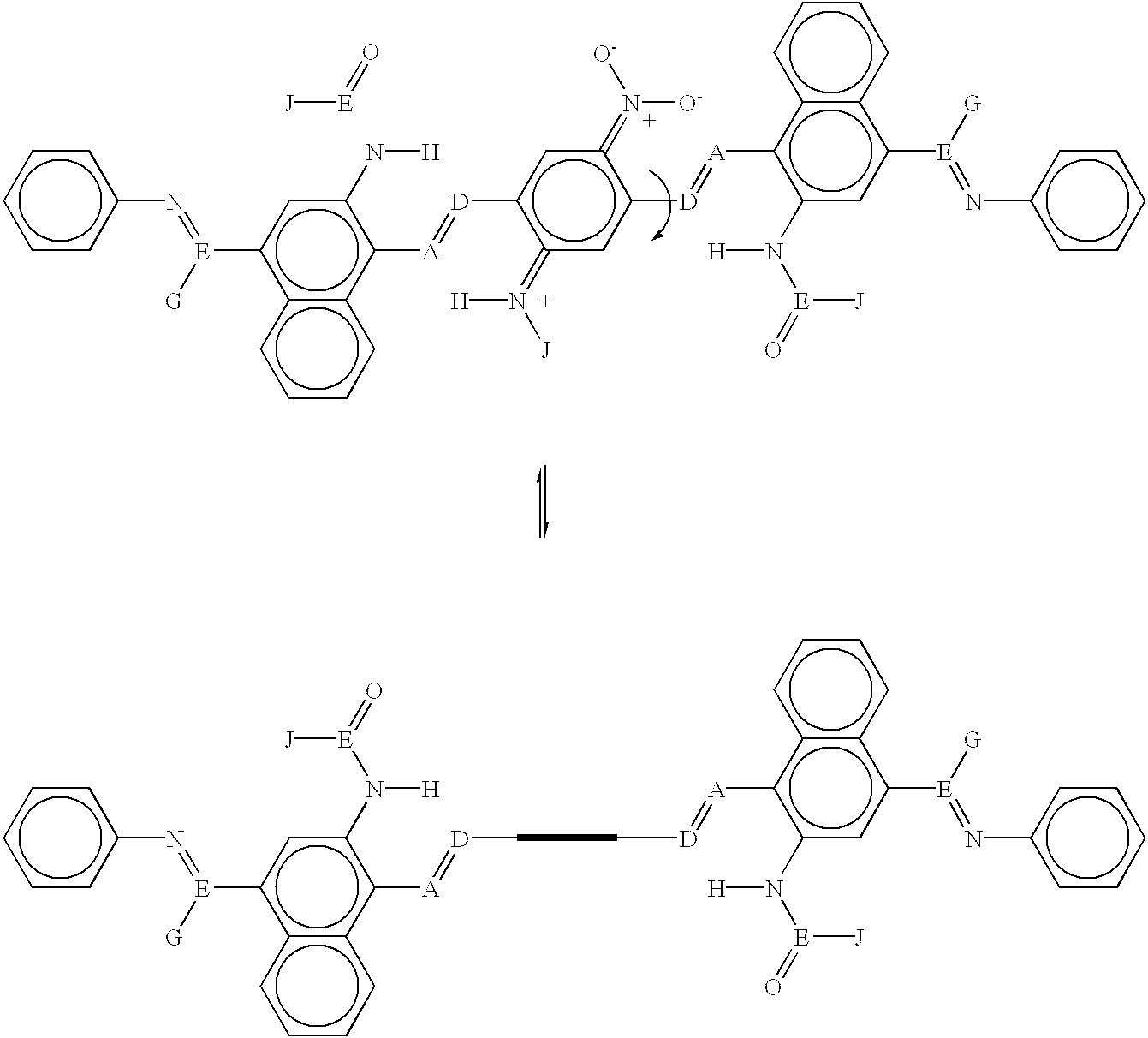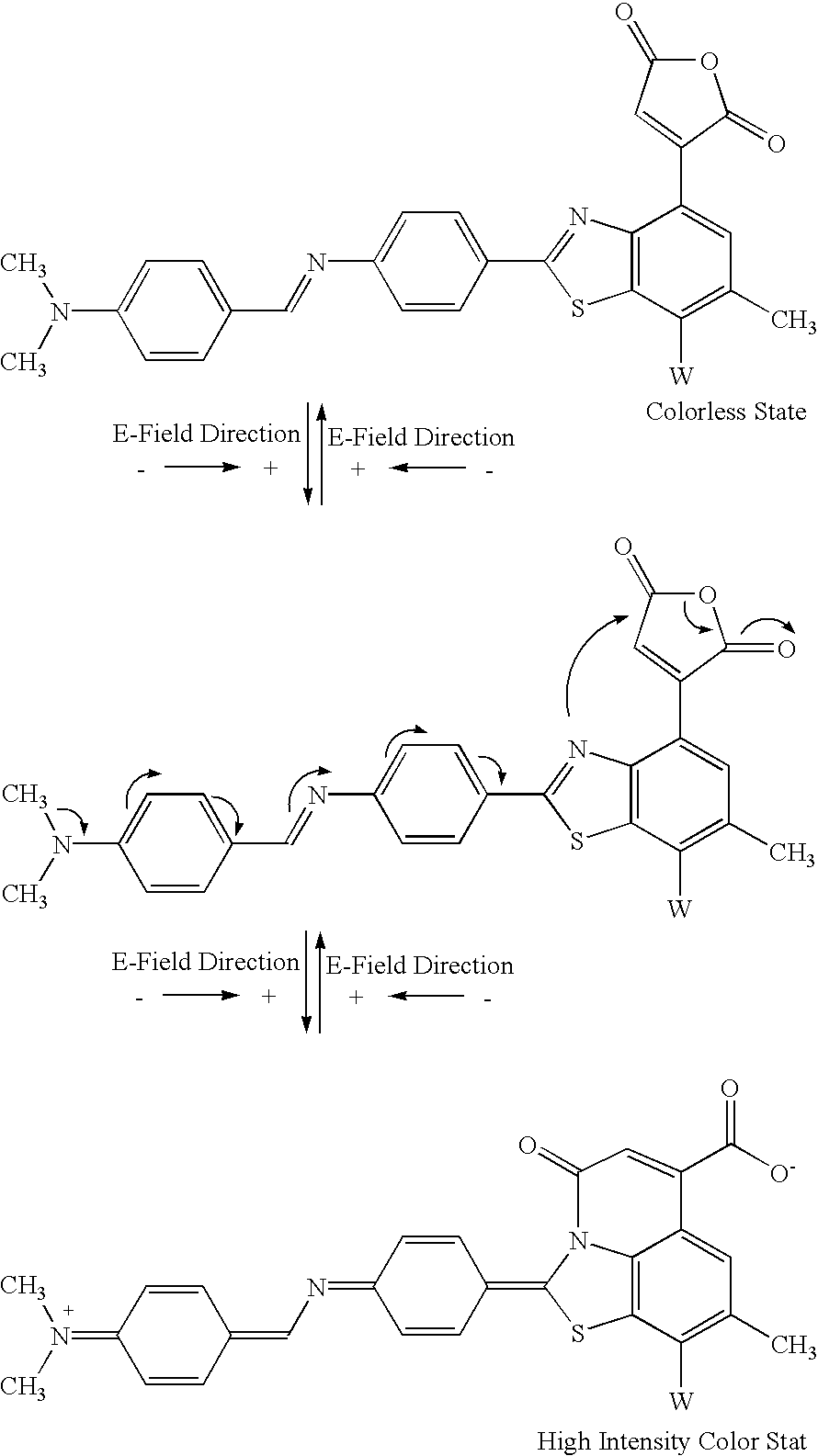Bistable molecular mechanical devices with a band gap change activated by an electric field for electronic switching, gating, and memory applications
a molecular mechanical device and band gap change technology, applied in the field of molecular systems, can solve the problems of slow switching time of molecules, irreversible switches, and large energy expenditure to toggle switches, and achieve the effect of fast switching time, easy and cheap making, and high efficiency
- Summary
- Abstract
- Description
- Claims
- Application Information
AI Technical Summary
Benefits of technology
Problems solved by technology
Method used
Image
Examples
example 1
[0095] The molecule shown above (Example 1) has been designed with the internal rotor 32 perpendicular to the orientation or current-flow axis of the entire molecule 30. In this case, the external field is applied along the orientation axis of the molecule 30 as pictured--the electrodes (vertical dotted lines) are oriented perpendicular to the plane of the paper and perpendicular to the orientation axis of the molecule 30. Application of an electric field oriented from left to right in the diagrams, as indicted by the double-headed arrow, will cause the rotor 32 as pictured in the upper diagram to rotate to the position shown on the lower right diagram, and vice versa. In this case, the rotor 32 as pictured in the lower right diagram is not coplanar with the rest of the molecule, so this is the OFF or low conductivity state of the molecule, whereas the rotor is co-planar with the rest of the molecule on the upper diagram, so this is the ON or high conductivity state of the molecule....
example 2
[0098] The molecule shown above (Example 2) has been designed with the internal rotor parallel to the orientation axis of the entire molecule. In this case, the external field is applied perpendicular to the molecular axis--the electrodes are oriented parallel to the long axis of the molecule and can be either perpendicular or parallel to the plane of the above model structures. For example, application of an electric field to the upper molecule shown above where the field lines are perpendicular to the molecular axis and pointing upward will cause the rotor as pictured in that diagram to rotate to approximately 90 degrees and appear edge on, as shown in the lower molecular diagram above, and vice versa. In this case, the rotor as pictured in the lower diagram is not coplanar with the rest of the molecule, so this is the OFF or low conductivity state of the molecule, whereas the rotor is coplanar with the rest of the molecule on the upper diagram, so this is the ON or high conductiv...
example 3
[0114] The letter W in Example 3 is used to designate an electron-withdrawing group, e.g., nitro, carboxylic acid derivatives, ketone, aldehyde, sulfone, sulfoxide, sulfuric acid or its derivatives, sulfenic acid or its derivatives, halogen or halogenated hydrocarbon, nitrile or nitrile derivatives, or hydrocarbon (saturated or unsaturated) with at least one of the above-mentioned electron-withdrawing groups.
[0115] An example of an E-field induced band gap change involving the formation of a molecule-metal complex or a molecule-Lewis acid complex is shown below (Example 4): 4
PUM
 Login to View More
Login to View More Abstract
Description
Claims
Application Information
 Login to View More
Login to View More - R&D
- Intellectual Property
- Life Sciences
- Materials
- Tech Scout
- Unparalleled Data Quality
- Higher Quality Content
- 60% Fewer Hallucinations
Browse by: Latest US Patents, China's latest patents, Technical Efficacy Thesaurus, Application Domain, Technology Topic, Popular Technical Reports.
© 2025 PatSnap. All rights reserved.Legal|Privacy policy|Modern Slavery Act Transparency Statement|Sitemap|About US| Contact US: help@patsnap.com



